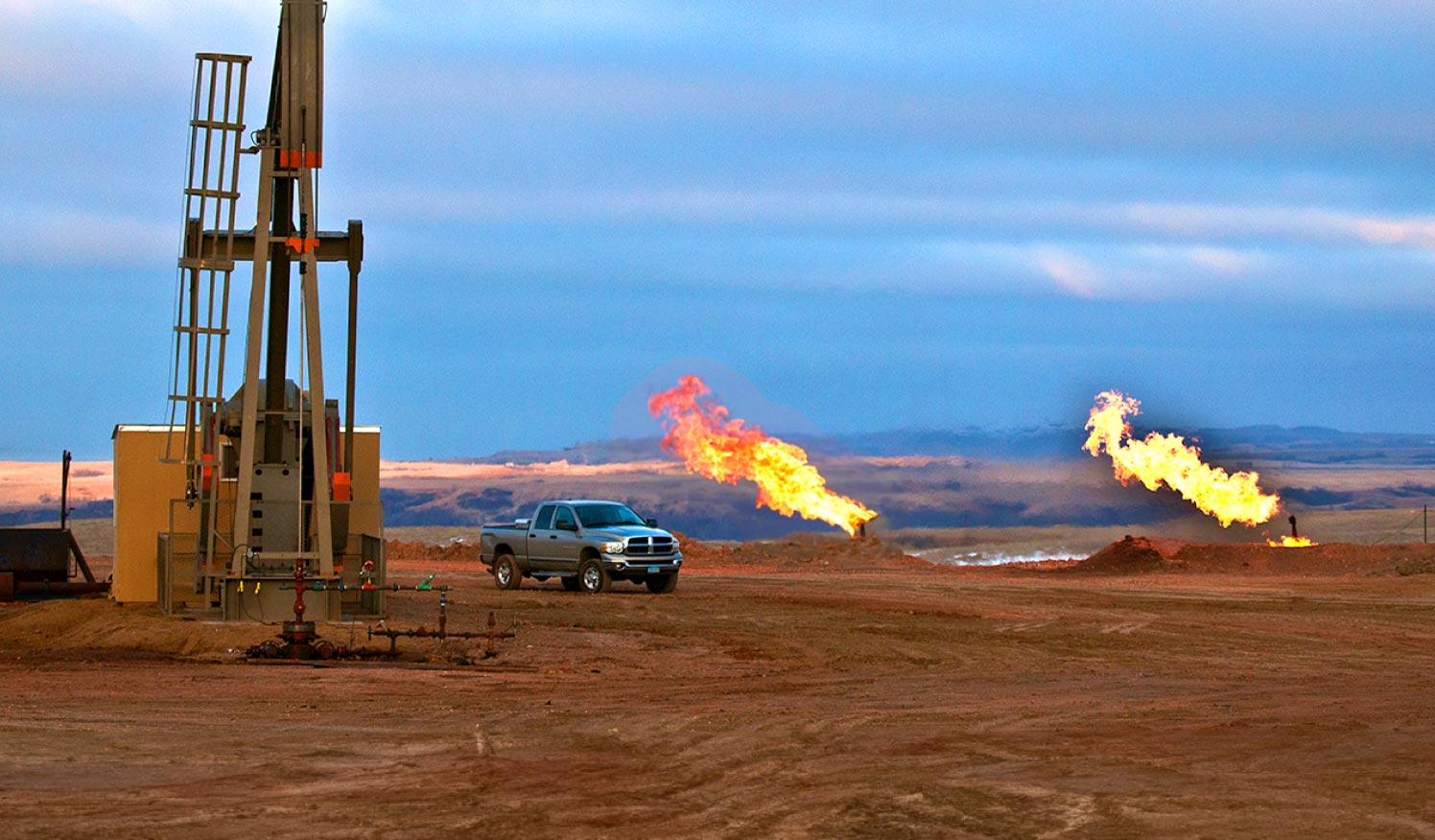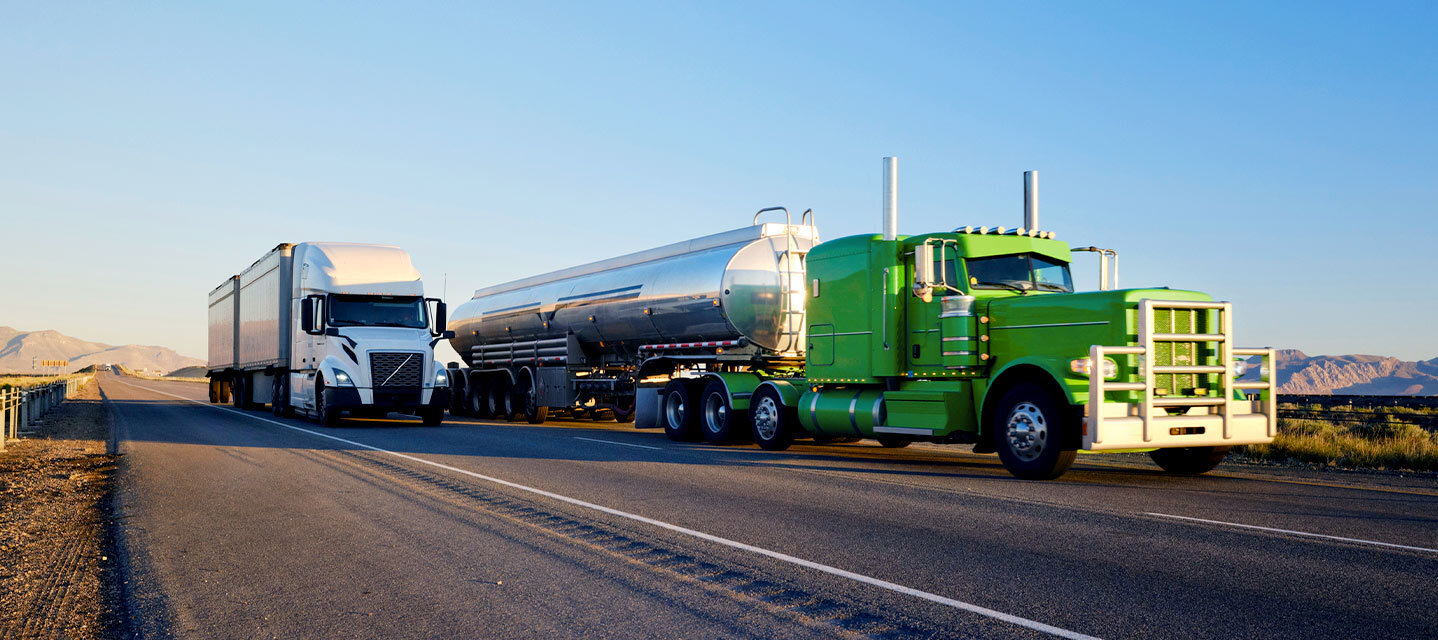5 data-driven strategies to optimize your oil and gas fleet
Optimize your oil and gas fleet with data! Explore strategies that help you track your fleet, reduce idle time, stay on top of maintenance, and much more.

Dec 4, 2025

Key Insights
- Real-time tracking using GPS and telematics improves visibility, dispatch efficiency and security for oil and gas fleets.
- Minimizing idle time through monitoring, optimized schedules and driver training helps reduce fuel waste and costs.
- Implementing predictive maintenance with sensor-based monitoring prevents breakdowns and reduces downtime to keep your oil and gas fleet productive.
Running an oil and gas fleet is difficult. Beyond managing vehicles and routes, you’re dealing with some of the toughest operating conditions of any fleet industry. A single breakdown in a remote location can cost your business hundreds of thousands of dollars per day. With unpredictable terrain, extreme weather, strict regulations and constant market shifts, staying ahead requires more than just keeping vehicles on the road. That’s where a strong oil and gas fleet management strategy comes in. Fleet optimization is essential to keeping costs down, minimizing downtime and maximizing efficiency. This blog post will explore five data-driven strategies to help you streamline operations, improve reliability and maximize your fleet's potential.
Take control of your fleet with real-time tracking
Real-time tracking is a game-changer for oil and gas fleets. GPS and telematics provide instant visibility into your vehicles, equipment and high-value assets, even in remote locations. Real-time data improves dispatch efficiency by optimizing routes and improving response times. It also enhances security, which is crucial since oil and gas fleets are often targeted for theft in remote areas. Real-time tracking acts as a first line of defense, providing instant alerts and location data to speed up recovery and minimize disruptions.
Minimize idle time to reduce excessive spending
Idling is a silent profit killer in oil and gas fleet operations. The cumulative costs of excessive idle time add up quickly – one study revealed that 100 trucks idling for just two hours a day over 275 days translates to a staggering $165,000 in wasted fuel annually. However, implementing idle monitoring and alert systems, optimizing work schedules and routes, and providing driver training on efficient idling practices can lead to significant savings and efficiency gains. Telematics solutions offer the detailed data and reporting needed to track idle time, identify problem areas and measure progress.
Implement predictive maintenance to prevent breakdowns
In the oil and gas industry, reactive maintenance can lead to unplanned downtime, expensive emergency repairs and logistical challenges. Predictive maintenance uses sensor-based monitoring and telematics data to identify issues early and schedule maintenance proactively. This approach reduces downtime, extends equipment life and creates a safer work environment.
Boost fuel efficiency through driver behavior optimization
Driver behavior significantly impacts fuel efficiency. Speeding, harsh braking and rapid acceleration increase fuel consumption, costs and vehicle wear. Driver training and coaching, supported by telematics data, can improve these behaviors. Telematics tracks speeding, braking and acceleration, providing insights for targeted coaching, reduced fuel waste and improved safety.
Streamline compliance with automated reporting and alerts
Regulatory compliance in the oil and gas sector is complex and constantly changing. Non-compliance can result in fines, shutdowns and reputational damage. Manual compliance processes are time-consuming and prone to errors. Fleet management software automates reporting, tracks key data and sends real-time alerts, simplifying compliance, streamlining workflows and enhancing safety and efficiency.
Geotab’s fleet management solution
Geotab’s fleet management solution offers features that address the needs of oil and gas fleets. Its real-time tracking capabilities help monitor vehicle and equipment locations, bolstering security and aiding efficient dispatching. The platform also includes tools for monitoring and reducing idle time, which lowers fuel costs and minimizes wear and tear. Additionally, Geotab's solutions provide insights into driver behavior, promoting safer driving habits and further enhancing fuel efficiency.
Take control of your fleet today
By implementing these data-driven strategies and leveraging telematics solutions like Geotab’s, oil and gas fleets can transform their operations. This approach enables a shift from reactive to proactive management, fostering safer, more efficient and more profitable operations. Embracing these strategies leads to reduced costs, minimized downtime and a culture of continuous improvement.
Want to learn more? Download our free ebook for a more complete overview of how telematics can help your oil and gas fleet. Included is a checklist that will help guide you through creating a more productive, safer and more efficient fleet!
Subscribe to get industry tips and insights

Christine is the Content Manager for the Commercial sector
Table of Contents
- Take control of your fleet with real-time tracking
- Minimize idle time to reduce excessive spending
- Implement predictive maintenance to prevent breakdowns
- Boost fuel efficiency through driver behavior optimization
- Streamline compliance with automated reporting and alerts
- Geotab’s fleet management solution
- Take control of your fleet today
Subscribe to get industry tips and insights
Related posts

Protecting Our Most Precious Cargo: How Telematics is Powering a Safer Ride to School
October 23, 2025
2 minute read

How fleet technologies can help you overcome the school bus driver shortage
September 9, 2025
4 minute read

The top five benefits of intelligent police fleet maintenance
August 21, 2025
5 minute read

Strengthen high-value cargo security with advanced telematics
August 12, 2025
4 minute read

Oil and gas fleet management: What to know about the industry and what’s next
July 30, 2025
10 minute read
